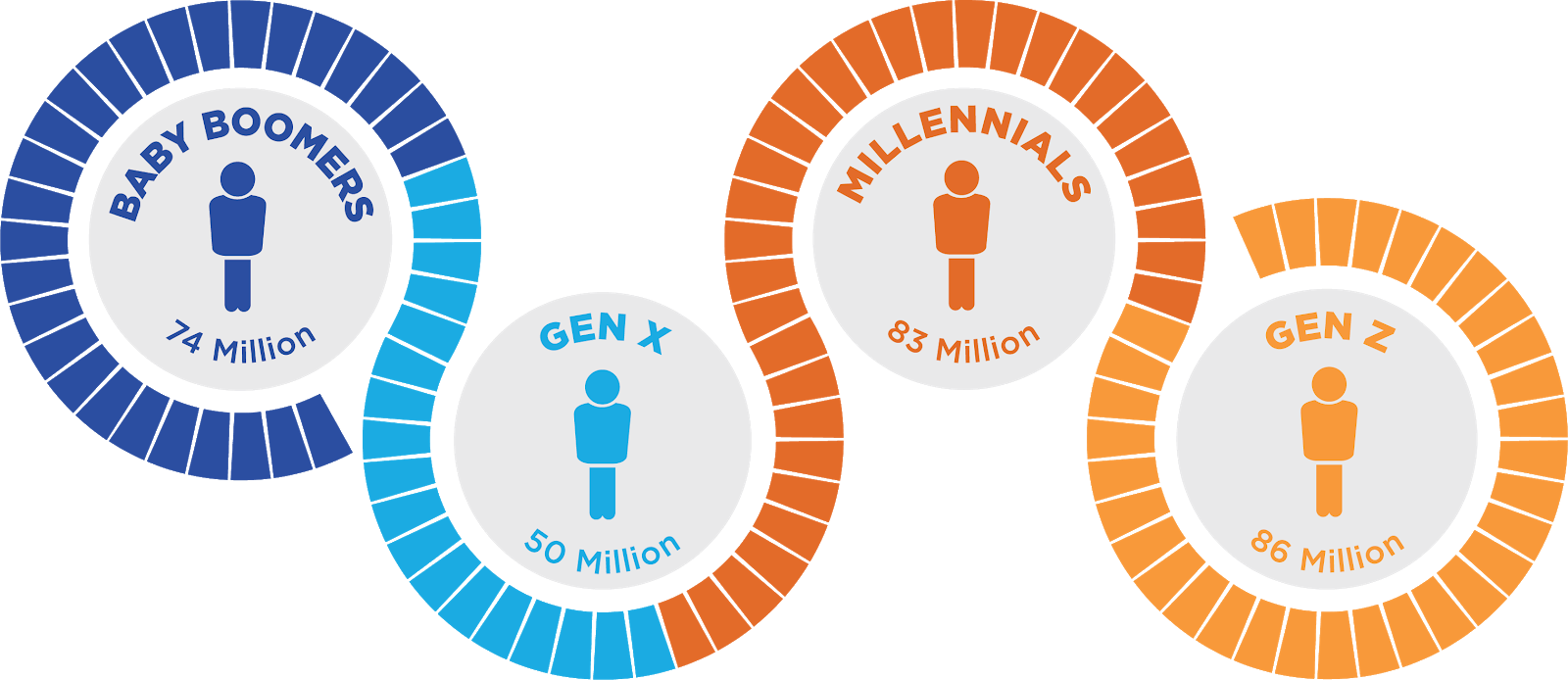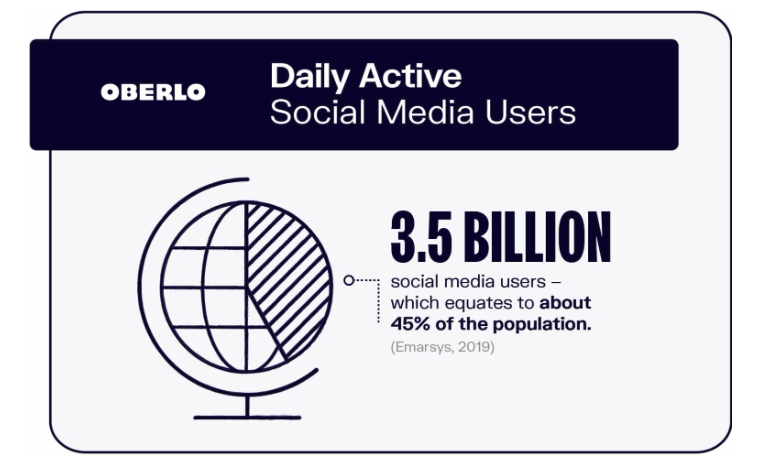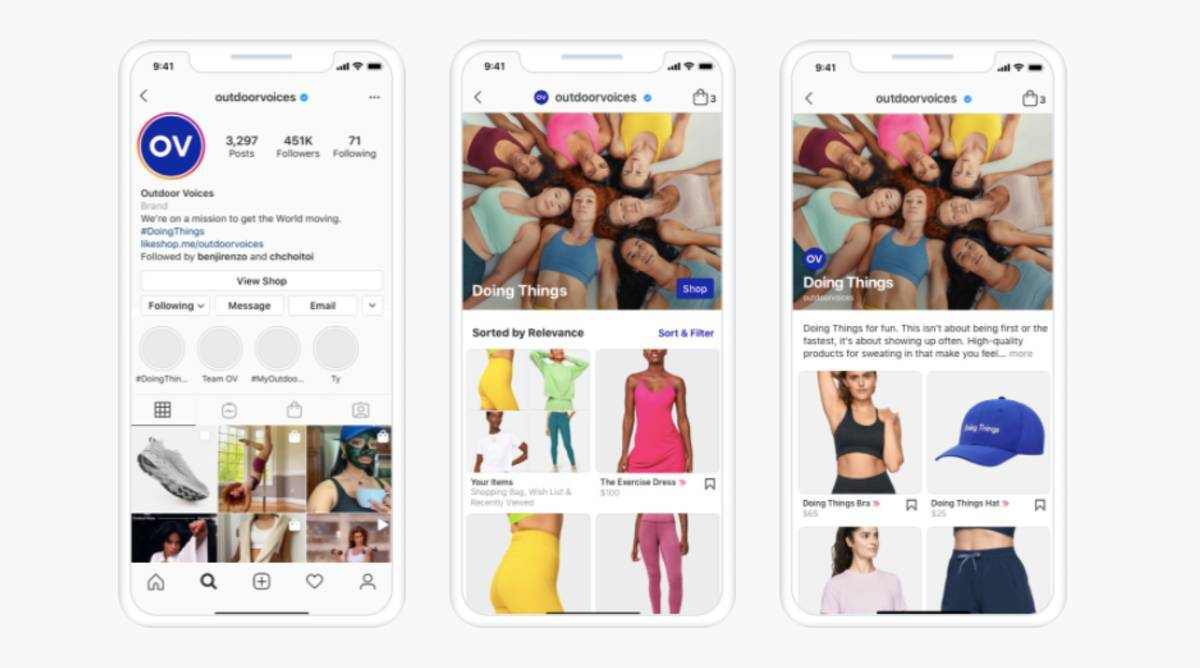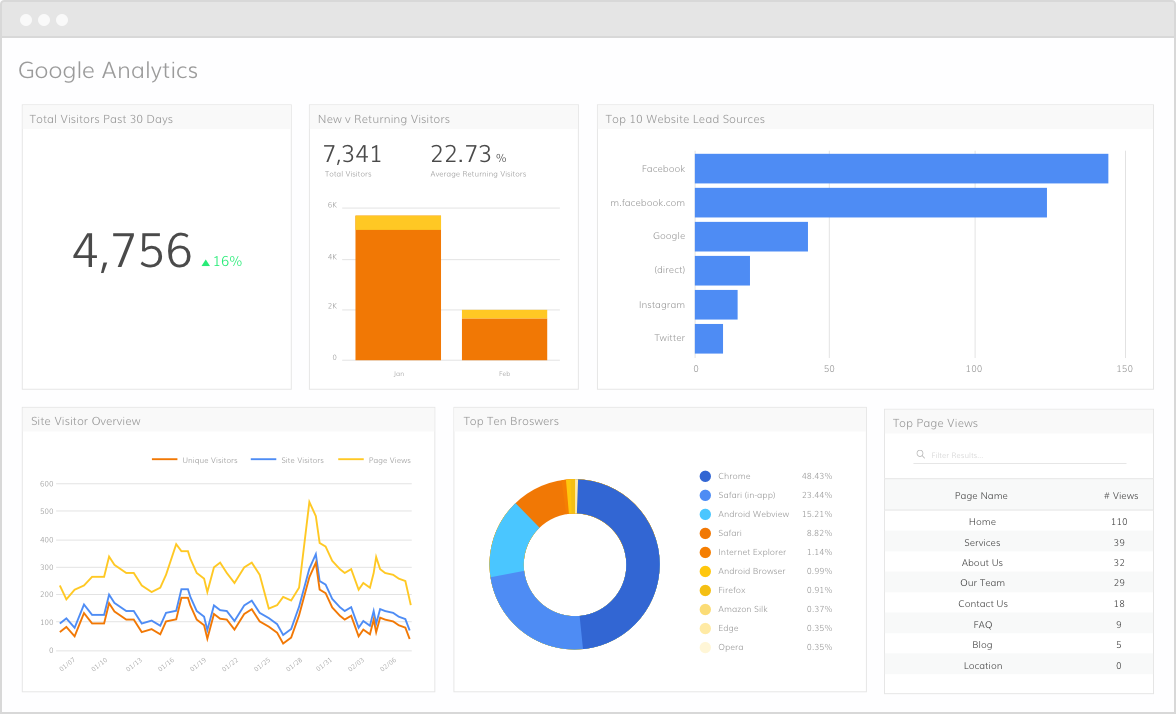What do you do as soon as you wake up in the morning? Some people can stretch, drink coffee or meditate.

social media in everyday life
For me, I start my day by checking notifications from social media during the night. I reply to a friend's message that I did not reply to yesterday, and I also check the comments of yesterday's post. In fact , 80% of smartphone users say that the first thing they do when they wake up is check their smartphone.
As such, as the number of smartphone users increases, the number of social media users also increases exponentially. It is no exaggeration to say that social media has now become a part of our daily life.
As a result, marketers' interest in social media is high. So, why is social media marketing so important? Why should we invest time in creating social media accounts for business? How to establish a social media marketing strategy for your company?
In this post, we would like to address the issues related to the above questions. Before that, let's first look at the definition of social media marketing.
What is social media marketing?
social media platform
Social media marketing means creating content to promote products or services on various social media platforms such as Facebook, Instagram, and Twitter. The content you create should be capable of increasing customer conversion rates and increasing brand awareness. Also, different marketing strategies should be implemented for each platform when marketing.
Social media marketing interacts with your target audience and customers and finds out where they are.
Although social media marketing is a very effective and valuable activity for overall business growth, your marketing strategy should depend on what social networks your audience spends their time on.
And if the audience is divided by generation, each has its own characteristics.

Baby boomers are people born between 1955 and 1963, right after the Korean War. These are the generations who participated in the struggle for democracy while attending college in the 1980s. They are generally strong in debate and interested in politics.
Generation X are people born between 1970 and 1980. As a generation that began to reveal their individuality amid economic prosperity, it is known as the generation that blossomed into popular culture.
Millennials are the offspring of baby boomers. I entered the university in the new millennium (2000). They are also called Generation Y because they are the next generation of Generation X.
Generation Z is the children of Generation X. Growing up with YouTube, they are also called the 'YouTube Generation'. I prefer smartphones rather than TV or PC, and images and video content rather than text.
Now that we've looked at the generational characteristics of our audience, let's look at the types of social media platforms that each audience prefers.
Types of social media platforms
Facebook
Twitter
- Number of users: 1.26 million daily active users worldwide
- Audience: mainly millennials
- Platform Structure: B2B and B2C
- Recommendation strategy: Public relations (PR); customer service
Instagram
- Number of users: About 1 billion active users per month
- Audience: mainly millennials
- Platform Structure: B2C
- Recommendation strategies: natural media, behind-the-scenes, user-generated content (UGC); Advertisement
LinkedIn
- Number of Users: Approximately 6.75 million monthly active users worldwide
- Audience: Baby Boomers, Generation X, Millennials
- Platform Structure: B2B
- Recommended Strategies: B2B Relationships, Business Advancement, Employment Marketing
Youtube
snapchat
Pinterest
So far, we have looked at the characteristics of each social media network in detail. Next, let's look at the benefits of social media marketing.
Benefits of Social Media Marketing
There are four main reasons why you should start social media marketing.
- Increases brand awareness.

Number of social media users
In 2019, more than 3.5 billion people worldwide used social media. That's the equivalent of 45% of the world's population. This huge number of social media users proves that social media marketing is effective in increasing brand awareness.
In fact, social media has been proven to increase brand awareness by increasing engagement. Social engagement is shown through comments, likes, shares, and posts. Social media can also help increase brand awareness by directing you to the site. You can do this by posting a link to that website on your social media profile, bio or post.
- Generate leads and increase conversion rates.
People who follow you are people who are interested in seeing your posts. This makes it relatively simple to generate leads, increase conversions, and increase sales by promoting and sharing products on your account.
Here are a few ways you can use social media to generate more leads.
- Create content that engages visitors and followers on your social media.
- Include a link to your website in your profile introduction.
- Use live video to announce exciting news like a new product launch or the latest update.
- Run a social media marketing campaign on one of your channels.
- Sell products through your profile.

Instagram Shopping (Image by Indianexpress )
On Facebook or Instagram, there is a shopping function that allows you to sell products. These features allow your visitors and followers to view and click on information about a product, such as price or size. Visitors will naturally make payments through the feature, and in doing so, they will be purchasing items directly from you.
- Develop relationships with customers.
By engaging with your followers, you can build sustainable relationships between them and your business. You can connect with them by giving them something they need, such as posting a post or answering a question in a comment.
You can also ask your followers about a product or pain point, or offer a free giveaway to build trust with them.
- You can learn from your competitors.
Social media is a great way to keep your competitors in check. Through social media, you can see the products they are promoting, the advertising campaigns they are running, or their social media strategies, such as the level of interaction with their followers.
Social media can help you see what's working and what your competitors are doing, so you can decide whether or not to change your company's approach. Finally, you can browse your competitor's accounts to see if the marketing you're doing stands out and is unique.
So, how do you plan a social media marketing strategy? There is a five-step process to making your marketing plan sustainable and have a positive impact on your business.
How to create a social media marketing strategy
- Understanding the buyer persona and audience
- Decide which social platform to use
- Create unique and engaging content
- Schedule your posts
- Analyzing Impact and Consequences
- Understanding the buyer persona and audience

Buyer Persona
The first step to a social media marketing strategy is to define your buyer persona and who your audience is. That way, you can tailor your target audience to their needs and interests. To do this, you need to think about the people you want to reach and why and how you will share them. For example, if your company sells trendy leggings and trousers, your target audience could be millennials who care about clothes and like to wear stylish sportswear.
By considering your buyer persona and audience, you can create the right content for the followers and customers you want to get, and create content that will keep them interested.
- Decide which social platform to use
It is very important to decide 'where' to post your content. However, there is not necessarily a right or wrong answer when it comes to which social channel to use. Rather, you need to think more about the needs of your target audience and where they spend most of their time.
For example, if you've decided, as mentioned earlier, that your target audience is track-loving millennials, your social media channel might be Instagram. Because millennials have the largest share of Instagram.
- Create unique and engaging content
On social media used by billions of people around the world, some of your followers or people viewing your profile may have seen content from your competitors or other businesses in the same industry. That's why it's so important to create social media content that stands out and engages. You should also encourage them to click the follow button to engage with your brand.
To create creative content, you need to think about how to promote your product uniquely by comparing your product to content shared by your competitors. Also, there are ways to take advantage of the features provided by the platform you are using. For example, you can use the live video feature on Facebook for a product launch or a free giveaway.
Finally, take advantage of how you leverage your current customers to create content. For example, reposting content or sharing product photos taken by customers using hashtags to share their experiences.
- Schedule your posts
When posting a post, it's not just posting it, but making a plan before that is also a process. And one of the easiest ways to make sure these posts are shared as planned is with a social media management solution. The tool allows you to write subtitles, prepare photos and videos, and plan your posts in advance. It also automatically shares posts on a schedule and monitors interactions on all posts. Social media management solutions help you save time and focus more on other tasks.
Here are some examples of social media management solutions.
- HubSpot

Hubspot social media tool
HubSpot is a marketing software that provides social media tools to help you publish and monitor posts and build genuine relationships with your followers. You can schedule and publish posts in advance, and compare in-depth reports on post engagement to understand the performance of different platforms, content types, post times, and more.
- Sprout Social
Sprout Social is a social media marketing management solution designed to help you plan content creation, manage marketing campaigns, understand engagement, and review content reporting and analytics.
- Hootsuite
Hootsuite is a social media management platform for finding, scheduling, managing and reporting your content. You can plan your posts ahead of time, post to all channels at once, and measure ROI, including comprehensive content analysis.
How often should I post?
So, what should be the appropriate frequency of posting on social media channels?
First of all, if you think about it, it seems appropriate to post only when there are high-quality posts that can be posted. This means that when you post, you need to have a clear reason for posting. This gives you a good balance of posting frequency. If you post too often, your followers may be annoyed. On the other hand, if you don't post too often, your followers may forget you. Both situations have the potential to lower your followers.
To prevent this, there are various studies and data that can be referenced in determining the frequency of postings. Every business is different and you have to make decisions based on your audience. Then you can start experimenting by adjusting the frequency of your posts. In addition to this, other factors, such as post time, can help determine which factors drive the highest engagement.
5. Analyze Impact and Consequences
One of the most important things in social media marketing is that your efforts must be successful to achieve your goals. To do this, you need to keep track of your posts by reviewing and managing your social media metrics across all channels.
Below is a description of the 10 important metrics you should keep track of.
- Engagement : Includes all interactions with your posts, such as clicks, comments, likes, replies, etc. In addition to this, there are additional features that certain platforms have (eg Instagram-save, Pinterest-pin).
- Reach : The number of people who have viewed content related to your page or profile.
- Followers : The number of people who click the “Follow” button on your profile and regularly view your posts.
- Impressions : The number of times a post was viewed on your profile or page, regardless of whether or not members of your audience clicked on it.
- Video Views : The number of views each on a channel with video function, such as Facebook, Snapchat, and Instagram.
- Profile Visits : The number of people who have viewed your social media pages.
- Mentions : The number of times your profile has been mentioned by other people.
- Tags : This means that your audience has added your company's profile name or hashtag to another post.
- Repost: Reposting your post back to your own feed.
- Share : This means your audience and followers will take it from your profile and share it on their network.
Similar to the strategy you use when you want to generate leads and increase conversions, you can use all of the preceding metrics, increase your followers, and improve the overall engagement of your profile.
How to measure social media metrics
You can review your social media metrics in a variety of ways, such as installing tools for analytics on the different platforms you use. Let me explain in more detail with an example.

Example of Google Analytics
In addition to this, you can use a tracking tool such as Google Analytics or a tool for statistics. Google Analytics is good for tracking social media and website metrics. Finally, many of the social media scheduling solutions covered earlier automatically have monitoring and tracking installed already. All these metrics tracking tools will teach you how to increase understanding and engagement with your followers and audiences.
Now that you know the benefits of social media marketing and how to strategize it, let's talk about the various resources that can help you put it into practice.
social media marketing resources
There are various social media marketing resources all around us where we can build our marketing knowledge. If you gain marketing knowledge through the courses and training that will be introduced in the future, you will be able to participate more confidently when you work in social marketing at your company in the future.
Social Media Marketing Courses and Training
Here are three ways you can get training in social media marketing that you may need depending on your specific business situation.
- earn a degree
Although there is no “social media marketing degree” required for undergraduate programs, many schools and institutions offer courses leading to certification, MicroMaster’s, and master’s degrees online.
- Using an online learning site
Lynda's website offers learning services such as training, tutorials and more covering a wide range of topics in social media marketing.
- Obtaining a license under the jurisdiction of the company
You can also obtain certifications from your company, such as the Hubspot Social Media Certification.
Start social media marketing
Today, billions of people use social media. Given the benefits, it seems natural for most businesses to use social media marketing channels to promote their products or connect with customers.
Although the process of finding the right social media marketing for your company may seem a little daunting, if you understand social marketing trends and utilize various resources well, you will be able to find a suitable marketing method.
So, why not start social media marketing now?